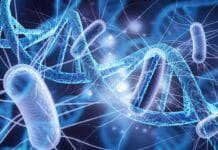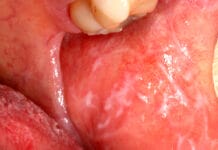Research led by the University of Kent has identified a fascinating association between a biological rhythm in human primary teeth and weight gain during adolescence. The study by Dr. Patrick Mahoney and an international team of researchers from Kent’s School of Anthropology and Conservation discovered that the timing of Retzius periodicity (RP) is associated with mass and weight gains during early adolescence.1,2
The findings could provide a new way to explore weight-related health risks many years before adverse health effects manifest in adulthood using exfoliated primary teeth as a marker.1
The Study
Retzius periodicity (RP) is a rhythm that forms through a circadian-like process during the development of tooth enamel. This rhythm, which repeats at intervals that can be measured in days, holds insights into the growth patterns of individuals. This rhythm is consistent within the permanent molars of individuals who do not show evidence of developmental stress.1
The typical RP cycle in humans follows a nearly seven-day pattern but can range from five to twelve days. This variability in the tooth rhythm prompted the researchers to investigate its potential correlation with weight gain during adolescence.1
The Results
The study is the first to explore the association between RP and adolescent weight gain. The research revealed that adolescents with a faster biorhythm, characterized by a five or six-day cycle, tended to weigh less, experienced minimal weight gain, and had the least change in their body mass index (BMI) over 14 months compared to those with a slower biorhythm.1
Conversely, those with a slower biorhythm, featuring a seven or eight-day cycle, exhibited the most significant weight gain during this critical development period. Study participants with slower biorhythms were 6.6 times more likely to develop obesity (BMI >95th percentile) after 14 months.1
This research highlights the potential significance of RP in predicting future health outcomes. Excessive weight gain during puberty can have far-reaching consequences for health, including an increased risk of obesity in adulthood.1
Dr. Patrick Mahoney, who led the research, expressed excitement about these initial findings. He emphasized that the next step is to investigate whether the discovered link extends to adverse health outcomes for adults. The revelation that primary teeth may hold a record of this growth rhythm long before adult health consequences manifest is particularly intriguing.2
Dr. Gina McFarlane, a histologist involved in the project, further emphasized the significance of these findings. She highlighted that primary teeth contain precise information about a fundamental growth rhythm. This rhythm now appears closely associated with adolescent weight gain, opening new avenues for understanding the links between childhood weight and adult health risks.2
Conclusion
The University of Kent’s research on Retzius periodicity in primary teeth has uncovered a unique association between this biological rhythm and weight gain during adolescence. These findings can help the understanding of how early developmental factors impact long-term health outcomes.
As researchers further investigate this discovery, it may pave the way for proactive interventions to mitigate the risks associated with excessive weight gain during adolescence and its implications for adult health.
Before you leave, check out the Today’s RDH self-study CE courses. All courses are peer-reviewed and non-sponsored to focus solely on high-quality education. Click here now.
Listen to the Today’s RDH Dental Hygiene Podcast Below:
References
- Mahoney, P., McFarlane, G., Loch, C., et al. Dental Biorhythm Is Associated With Adolescent Weight Gain. Communications Medicine. 2022; 2: 99. https://doi.org/10.1038/s43856-022-00164-x
- University of Kent. (2022, August 22). Dental Biorhythm Is Associated With Adolescent Weight Gain, Study Finds. ScienceDaily. www.sciencedaily.com/releases/2022/08/220822091057.htm











